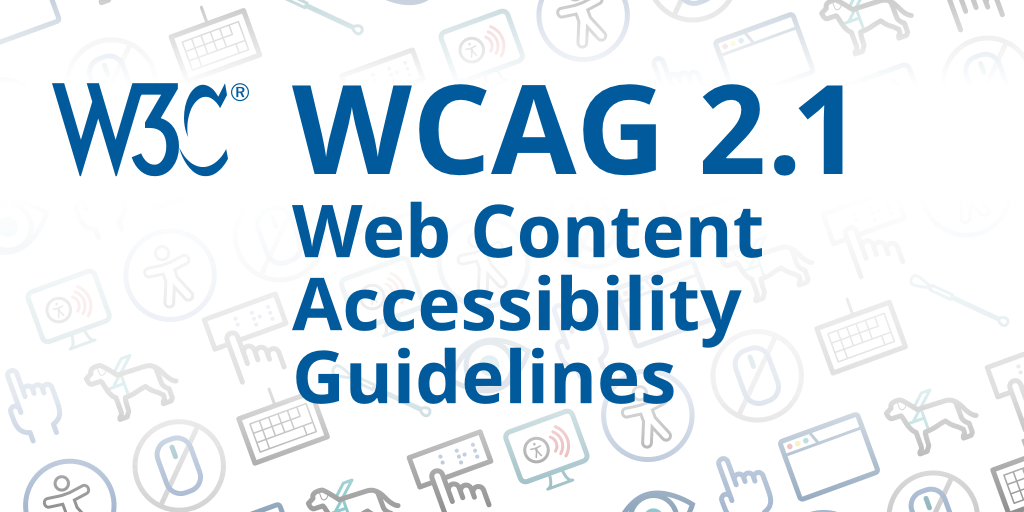News
Authorized Translation of WCAG 2.1 in Finnish
22 November 2019 | Archive
 Today the World Wide Web Consortium published the Authorized Finnish Translation of Web Content Accessibility Guidelines (WCAG) 2.1, Verkkosisällön saavutettavuusohjeet (WCAG) 2.1. The Lead Translation Organization for this Authorized Translation was the Kehitysvammaliitto ry.
Today the World Wide Web Consortium published the Authorized Finnish Translation of Web Content Accessibility Guidelines (WCAG) 2.1, Verkkosisällön saavutettavuusohjeet (WCAG) 2.1. The Lead Translation Organization for this Authorized Translation was the Kehitysvammaliitto ry.
Translations in other languages are listed in WCAG 2 Translations. W3C Web Accessibility Initiative (WAI) particularly encourages the development of Authorized Translations of WCAG 2.1 and other technical specifications to facilitate their adoption and implementation internationally. Read about the Policy for W3C Authorized Translations.
High Resolution Time Level 2 is a W3C Recommendation
21 November 2019 | Archive
The Web Performance Working Group has published High Resolution Time Level 2 as a W3C Recommendation. This specification defines an API that provides the time origin, and current time in sub-millisecond resolution, such that it is not subject to system clock skew or adjustments. High Resolution Time Level 2 replaces the first version of High Resolution Time.
CSS Containment Module Level 1 is a W3C Recommendation
21 November 2019 | Archive
The CSS Working Group has published CSS Containment Module Level 1 as a W3C Recommendation. This CSS module describes the contain property, which indicates that the element’s subtree is independent of the rest of the page. This enables heavy optimizations by user agents when used well.
Call for Review: Trace Context is a W3C Proposed Recommendation
21 November 2019 | Archive
The Distributed Tracing Working Group has published a Proposed Recommendation of Trace Context. This specification defines standard HTTP headers and a value format to propagate context information that enables distributed tracing scenarios. The specification standardizes how context information is sent and modified between services. Context information uniquely identifies individual requests in a distributed system and also defines a means to add and propagate provider-specific context information.
Comments are welcome through 10 January 2020.
Verifiable Credentials Data Model 1.0 is a W3C Recommendation
19 November 2019 | Archive
The Verifiable Claims Working Group has published Verifiable Credentials Data Model 1.0 as a W3C Recommendation. Credentials are a part of our daily lives; driver’s licenses are used to assert that we are capable of operating a motor vehicle, university degrees can be used to assert our level of education, and government-issued passports enable us to travel between countries. This specification provides a mechanism to express these sorts of credentials on the Web in a way that is cryptographically secure, privacy respecting, and machine-verifiable.
Call for Review: Data Catalog Vocabulary (DCAT) – Version 2 is a W3C Proposed Recommendation
19 November 2019 | Archive
The Dataset Exchange Working Group has published a Proposed Recommendation of Data Catalog Vocabulary (DCAT) – Version 2. DCAT is an RDF vocabulary designed to facilitate interoperability between data catalogs published on the Web. This document defines the schema and provides examples for its use. DCAT enables a publisher to describe datasets and data services in a catalog using a standard model and vocabulary that facilitates the consumption and aggregation of metadata from multiple catalogs. This can increase the discoverability of datasets and data services. It also makes it possible to have a decentralized approach to publishing data catalogs and makes federated search for datasets across catalogs in multiple sites possible using the same query mechanism and structure. Aggregated DCAT metadata can serve as a manifest file as part of the digital preservation process.
Comments are welcome through 7 January 2020.
W3C Invites Implementations of Service Workers 1
19 November 2019 | Archive
The Service Workers Working Group has published a Candidate Recommendation of Service Workers 1. This specification describes a method that enables applications to take advantage of persistent background processing, including hooks to enable bootstrapping of web applications while offline. The core of this system is an event-driven Web Worker, which responds to events dispatched from documents and other sources. A system for managing installation, versions, and upgrades is provided. The service worker is a generic entry point for event-driven background processing in the Web Platform that is extensible by other specifications.
Comments are welcome by 31 January 2020.
